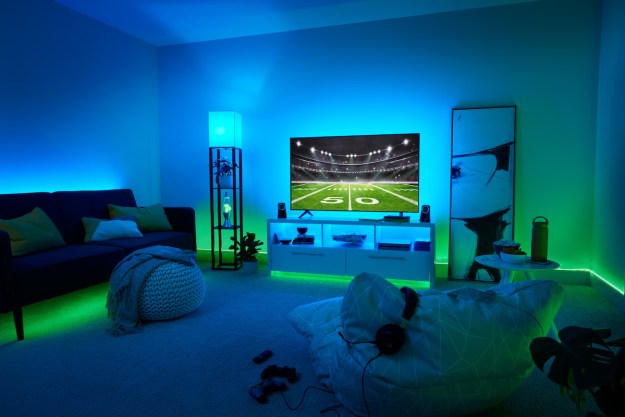Britney Henry knows what a good throw feels like.
Early in her career at the University of Oregon, and later during her 10-year tenure at the Olympic Training Center in Chula Vista, the hammer thrower didn’t rely on much other than her athlete’s intuition to gauge whether her posture, speed, and release would make the 9-pound steel ball attached to a wire go the distance.
“When I was a thrower, I was pretty naïve on what data could do,” she said. “I personally wish I would have been a little bit more conscious of my data as a thrower, but it was mostly I just wanted to feel the throw and hope it felt right.”

For professional throwers — whether it’s those who throw the discus, hammer, javelin, or shot put — consistency is key. For decades, “feeling a throw” and watching the not-so-high-def video footage after, Henry said, was one of the few ways athletes analyzed their statistics and made adjustments to their form.
Now, just three years after her retirement, Henry has embraced a 117-year-old technology in her quest to “leave the sport better” than she found it.
“With radar, athletes can increase their accuracy down to the minutiae,” Henry, who now works in athletics business development at Flightscope, which produces 3D Doppler tracking and image processing tracking monitors. “It also doesn’t take up much space, it doesn’t impede upon the athlete or the coach. It’s a little box that’s just behind the cage, wirelessly connected to a laptop or tablet and once it’s calibrated can give you instant feedback in 10 to 15 seconds.”
A century-old technology
Radar technology is not new. Developed in 1904 by German physicist Heinrich Hertz, radar only really took off in World War II as a way to detect unseen enemy aircraft. Radar stands for “radio detection and ranging” and it works by sending out low-frequency radio waves — and those waves bounce back when they hit nearby objects.
The Doppler effect, which can measure the distance of moving objects, can tell us how far a target is away by how long it takes to receive the same radio frequency back. Think of Doppler radar like a speeding ambulance. The closer the ambulance is, the higher the pitch of its siren. As it rushes past, its pitch decreases.
Like dozens of other things developed specifically for military use (take the humble GPS and Duct Tape for example), radar has been adapted commercially across dozens of industries. Autonomous cars? They use radar to detect what’s around them. Airplanes use radar to determine direction during extreme weather. And now, athletes, and the sports industry as a whole, are using it to smash world records and alleviate possible injury.
“There is significant potential for the application of this technology in sports,” Ram Narayanan, a professor of electrical engineering at Pennsylvania State University, said. “It provides more information than you can see with the eye. Every movement has a unique signature, so you can look at how, for example, a tennis player hits the ball, make a recording, and then look at the same move when they are fatigued. It can also determine when an injured player is ready to go back into the field.”
How radar analytics help athletes
Not only does Flightscope provide its athletes and coaches with instant video feedback, but it’s chock-full of data, according to Henry. Flightscope’s athletic tracking system not only tracks the distance of a throw, but at what angle the throw is released, what direction, at what speed, its time in the air, and the ability to compare results from various individual throws, or the throws across an entire team.
For example, using the feedback from the radar system, coaches are able to look at the data gathered from a throw and advise their players to raise their angle on release by a few angles to achieve a slightly further toss.

“When I started talking with coaches, it was an eye-opening experience for me,” Henry said. “Because they have a daily tracker of how the throwers are doing, they can directly correlate their results into extracurriculars for their players, for example, weightlifting or accessory work, or just to see how the nervous system is reacting to different training cycles.”
With Flightscope and its corresponding software, a thrower can more easily replicate their posture, stance, power, and technique to achieve similar results — almost developing a sort of muscle memory for successful throws.
Henry said injuries are much more common in throwers when they push too hard to try moves they’ve never tested before.
“With technology, you can use the data set to track your technique over time, and set your body up to handle the release speeds and release angles and not have these erroneous throws,” she said. “Consistency is a huge factor, and if you are able to track that, you can hopefully keep yourself out of the medical tent.”
Can radar decrease injury?
Narayanan and his colleague Dr. Cayce Onks teamed up to study how radar technology can be used as a tool to prevent injuries in athletes and published an optimistic study earlier this year. The results showed radar technology was a cost-effective way to identify subtle differences in “movement that is associated with increased risk of injury.”

For someone who has been studying radar for the last two decades, Narayanan remains enthusiastic about the technology’s potential to scale across the sports industry. But radar is not as flashy as some of the other recent advances in the last century. And that has proven to be a barrier to wide-scale adoption.
“If more and more professionals welcome it with an open mind, and see what it can do, and see what it cannot, understanding its advantages and limitations, then acceptance will follow,” he said.
Both Narayanan and Henry know radar has a while to go before it’s not solely associated with radio towers and speed traps, but are confident it’s bound to show up in more sports arenas in the near future.
“With the introduction and continuous use of this technology, the distances in world records will continue to be broken,” Henry said.
Editors' Recommendations
- Performance enhancing shoes? How Nike’s controversial Vaporfly line redefined running
- The incredible engineering inside an Olympic archer’s bow
- Quantum clocks and e-pistols: The ultra-precise timekeeping of the Tokyo Games




